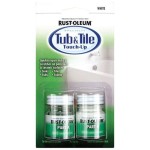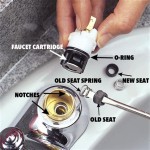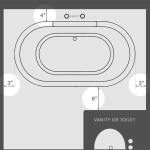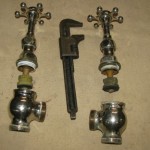How Wide is a Standard Bathtub? A Comprehensive Guide to Bathtub Dimensions
Understanding bathtub dimensions is crucial when planning a bathroom remodel or building a new home. Bathtub width, alongside length and depth, significantly impacts comfort and usability. This guide explores standard bathtub widths, variations in sizes, and factors influencing these measurements.
Standard Bathtub Widths
The standard width of a bathtub typically ranges from 30 to 32 inches. This measurement refers to the distance between the two longest sides of the bathtub's interior, excluding any built-in flanges or surrounding tiling. This width provides adequate space for most adults while maintaining a reasonable footprint within the bathroom.
Variations in Bathtub Sizes
While 30-32 inches represents the common width, bathtubs come in a range of sizes to cater to different needs and bathroom configurations. Smaller bathtubs, ideal for compact bathrooms or guest suites, can have widths as narrow as 24 inches. Larger, more luxurious soaking tubs can exceed standard widths, reaching 36 inches or more. These larger tubs offer increased comfort and bathing space but require more floor area.
Factors Influencing Bathtub Width
Several factors influence the width of a bathtub, including:
- Bathtub Style: Alcove bathtubs, the most common type, often adhere to standard widths due to their designed fit within three walls. Freestanding tubs, however, offer greater flexibility in width, ranging from compact to expansive sizes.
- Bathroom Size: The available space within the bathroom significantly dictates the maximum width of the bathtub that can be accommodated. Smaller bathrooms necessitate narrower tubs, while larger bathrooms allow for wider, more luxurious options.
- Bather's Needs: Individual preferences and physical limitations influence the desired bathtub width. Larger individuals may find standard widths restrictive and opt for wider tubs for increased comfort.
- Material: The material of the bathtub, such as acrylic, fiberglass, or cast iron, can impact the achievable widths due to manufacturing processes and material properties.
Measuring Bathtub Width
Accurate measurement of bathtub width is essential for proper installation and ensuring a suitable fit within the bathroom. To measure the width correctly, use a measuring tape to determine the distance between the interior walls of the bathtub at its widest point. Exclude any external flanges or lips that extend beyond the bathing area.
Considering Other Bathtub Dimensions
While width is a crucial consideration, other dimensions, such as length and depth, also impact bathtub usability. Standard bathtub lengths typically range from 55 to 60 inches, while depths, measured from the bottom of the tub to the overflow drain, typically range from 14 to 16 inches. These measurements should be considered in conjunction with the width to ensure a comfortable and functional bathing experience.
Impact of Bathtub Width on Bathroom Design
The width of the bathtub significantly influences the overall bathroom layout and design. Wider tubs require more floor space and may necessitate adjustments to other bathroom fixtures' placement. Planning for adequate clearance around the bathtub is crucial for comfortable access and movement within the bathroom.
Choosing the Right Bathtub Width
Selecting the appropriate bathtub width involves carefully considering the available bathroom space, individual bathing preferences, and overall design aesthetics. Balancing these factors ensures a functional and aesthetically pleasing bathroom that meets the needs of the user.
Exploring Different Bathtub Styles and Their Widths
Different bathtub styles offer various width options. Understanding the typical width ranges for each style can assist in selecting the optimal bathtub for a specific bathroom design. Some popular styles include:
- Alcove Bathtubs: As mentioned previously, alcove tubs typically adhere to standard widths of 30-32 inches due to their installation within three walls.
- Freestanding Bathtubs: These tubs offer more flexibility in width, ranging from compact sizes for smaller bathrooms to larger, more luxurious widths.
- Corner Bathtubs: Corner tubs, designed to fit into a bathroom corner, can have varying widths depending on their shape and configuration. They can offer a space-saving solution while still providing ample bathing space.
- Drop-in Bathtubs: These tubs are installed within a framed enclosure, allowing for more customization in size and shape, including wider options.
Accessibility and Bathtub Width
When considering bathtub width, accessibility requirements should be taken into account. Individuals with mobility limitations may require wider tubs or walk-in tubs, which offer easier entry and exit. These specialized tubs often exceed standard widths to accommodate assistive devices and provide ample space for maneuvering.

Our Favorite Bath Trays And Accessories Reviews By Wirecutter

Standard Bathtub Dimensions Types 2024 Guide Photos Examples

Walk In Tub Dimensions Bathtub Specifications Kohler Bath

Standard Bathtub Dimensions Types Of Foyr

Bathtub Dimensions In Feet All You Need To Know

Imex Essence 1500 X 640mm White Freestanding Bath Pb109

Kohler Bellwether 60 In X 30 Soaking Bathtub With Left Hand Drain White K 837 0 The Home Depot

Bariatric Walk In Tub Dimensions Bathtubs

Bathtubs The Home Depot

Extra Wide Bathtubs Ideas On Foter Bathtub Bathroom Renovation Cost For Small Bathrooms








